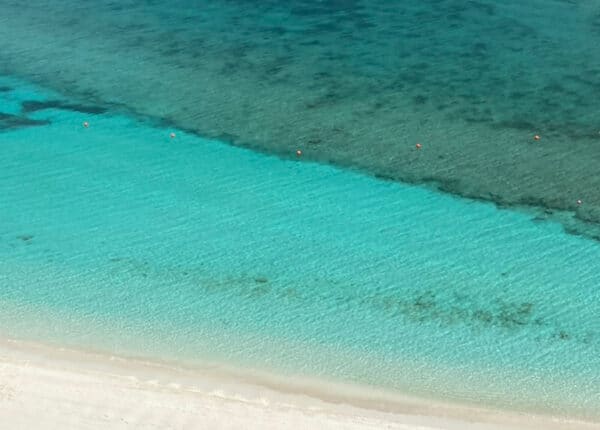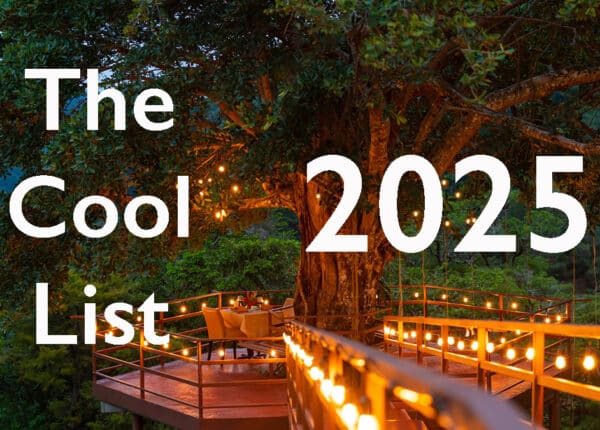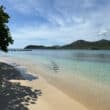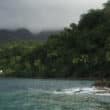By Paul Hay
CJ Contributor
The fifth “Global Ministerial Summit” was held in Washington, DC on Sept. 21. Ministers of health, tourism and economic development, trade commissioners, and health attachés from 25 nations gathered to discuss medical tourism challenges and offer recommendations.
The third “Caribbean Ministerial Summit” was one segment of this event.
It was dedicated to “issues related to identifying top centers of excellence, developing a medical tourism brand and managing communicable diseases.”
Dr E.Angus Friday – Grenada’s Ambassador to the United States of America – made a presentation titled “Pure Grenada, Pure Health, Building a Billion Dollar Industry on a Small Island Developing State.”
In it, he appealed to doctors in the USA to return to Grenada to serve local and international patients.
Grenada’s Saint George’s University, which offers four-year medical degrees, is expected to be the lead institution in its ambitious plan to attract medical tourists, train doctors, serve the local healthcare community and create jobs.
According to a report in the Wall Street Journal ,“St. George’s University Lands $750M Investment Deal,” a group led by Canadian private-equity firm Altas Partners LP and a fund advised by Baring Private Equity Asia” took majority stake in the University.
An article in the Medical Tourism Magazine in September said that “the investment underscores the market opportunities for high-quality medical tourism and education in the Caribbean.”
In my previous article “Healthcare in the Caribbean” published in August, I ended with a plea to Caribbean Governments to focus on improving healthcare delivery to their respective populaces and leave diversification into medical tourism to private investors.
Grenada seems to be doing just that.
Its objective is to diversify its offering of medical education into a medical tourism product. But, it is only facilitating such a development. The actual implementation of the programme is the responsibility of the private sector.
In my article, I also made mention of Professor Alvin G Wint’s book Competitiveness in Small Developing Economies: Insights from the Caribbean, published in 2003, and specifically to his chapter dedicated to healthcare in Jamaica.
In it, he noted that “The Jamaican health service is a rarely traded product as opposed to a non-tradable product because there is, in fact, trade.”
But, he only saw this trade as being immigration of Jamaican healthcare professionals and nationals travelling in search of “treatment unavailable at home.”
Nevertheless, he admitted that there was potential for greater trade in health services “as diagnostic, computer-based medical services cross borders as a result of the market convergence created by information technology.”
The year that book was published, the University Hospital of the West Indies (UHWI) was building an extension to its Operating Theatre block to accommodate Cardio-thoracic and Neurosurgical suites as well as adding an Intensive Care Unit (ICU) at its private wing: the Tony Thwaites’ Ward.
Being a consultant on that project, but at the time ignorant of Prof. Wint’s book, I remember the surgeons’ expectation that those new operating theatres would facilitate the introduction of telemedicine to the hospital. But, I have not been able to confirm the realization of that dream.
At the eighth Caribbean Conference on Health Financing Initiatives in Jamaica on 13 November 2013, James Cercone – President and founder of Sanigest International – presented a paper titled “Medical Tourism in the Caribbean: Fools Gold or Sunken Treasure? State of the Art and Lessons of Experience”.
He informed that the global market size for medical tourism was estimated to be US$60 billion, and the Caribbean showed strong potential in the industry but was failing to capitalize on this. In an overview of the industry, he explained that medical tourists spend up to ten times more than traditional tourists.
A study by Deloitte in 2009 estimated that there were 750,000 – 1,200,000 US medical tourists alone. In the previous year, a similar study in collaboration with Sanigest International had estimated that the target market for the Caribbean would be 312,900 medical tourists, which it valued at US$1.1 billion.
In 2013, the Jamaican government’s investment promotion agency – Jamaica Promotion (JAMPRO) – also signed a memorandum of understanding with American Global MD (AGMD) to construct a medical tourism facility estimated to cost US$170 million.
Like any other business, “If you build it, they will come” is a common misconception. To successfully compete in the medical tourism industry demands much more than just having the physical facilities, if the investment is to be sustainable.
Cercone explained that the main driver for medical tourism in the Caribbean is low price: the other drivers being lower transportation cost for US medical tourists, diasporic tourism and the attractiveness of the destination.
Referring to disability-adjusted life expectancies (DALE) in the World Health Organization’s (WHO) World Health Report 2000, Prof. Wint noted that: “Jamaica has the second-largest (positive) gap (of 53 ranks) between its DALE ranking and its per capita health expenditure among all 191WHO member countries”.
In this regard, Jamaica seems well placed to deliver the main driver for medical tourism, if it can transfer this competitive advantage to an international market. So, let us further examine the requirements for competitiveness in the medical tourism market.
In 1990, Professor Michael Porter revealed the now famous diamond framework of international competitiveness in his classic Competitive Advantage of Nations. This framework identified four major sources from which a nation derives competitiveness.
These sources are: demand conditions, factor conditions, related and supporting industries, as well as corporate strategy, structure and rivalry. These four work simultaneously to enable a national industry to effectively compete in international markets.
Prof. Wint argued that demand conditions were not relevant to the competitiveness of Jamaica’s healthcare system. I appreciate that it would not be relevant in the analysis of a local system against others that are not in direct competition. However, it does seem relevant in direct competition.
To argue this point, it should be understood that, as a civil servant, I was involved from the very feasibility study of the Government of Jamaica’s “Hospital Rationalization Programme” in 1986, and then worked as Project Coordinator in the Ministry of Health’s Central Projects Unit up to 1993.
This coupled with my work in the private sector, predominantly at UHWI, enables me to speak with some knowledge on Jamaica’s healthcare system. However, I will limit comments to my specific knowledge of healthcare facilities.
In the diamond framework, ‘demand conditions’ comprise three components: size and pattern of growth of domestic demand, composition of domestic demand, and the mechanism by which domestic preferences are translated to international markets.
With regards to the size and pattern of growth of domestic demand, Jamaica’s healthcare system is barely coping with present demand as it is, let alone future growth including increased foreign demand. So, new facilities have to be built to accommodate medical tourism.
Regarding the composition of domestic demand, it needs to be understood that, especially early in the development of medical tourism, facilities will be built in response to local demand. Facilities like the Cardiothoracic and Neurosurgical suites mentioned earlier would not be built without this demand.
Regarding translating local preferences to international markets, the predominant use of open, or Florence Nightingale, wards in Jamaican hospitals to better utilize nursing staff thus reducing overall cost, for example, is not the norm internationally.
So, preservation of competitive advantage in the cost of healthcare delivery will require finding some mid-ground to translate this preference to the international market. Fortunately, semi-private wards comprising of at least two beds per room is an option already in use.
To emphasize this point, reference is now made to the UHWI ICU mentioned earlier. Originally, the design featured an open ward with a central nursing station. The columns were too close to economically allow partitioning at a later date.
UHWI’s Jamaican Chief Executive Officer retired during the development of the design and was replaced by another from the Bahamas: whose hands-on involvement with the project resulted in the redesign of the ICU such that each bed space was enclosed with glass partitions.
Existing preferences in the international market also need to be addressed. “Healthcare in the Caribbean” highlighted the stellar performance of Cuba in prolonging life expectancies. Nevertheless, Cuba has become a popular medical tourism destination for cosmetic surgery.
In the diamond framework, ‘Factor conditions’ comprise infrastructure, as well as physical, human, capital, and knowledge resources. In this regard, Prof. Wint emphasized the benefits of the Caribbean’s secondary education system.
He described this as a “highly structured educational system biased towards traditional professions”, such as medicine, which results in “unusually strong demand pressures for entry” into medicine; and, provides “the high calibre of applicants” required by the profession.
‘Related and supporting industries’ improve the international competitiveness of domestic industries. Prof. Wint argues that Jamaica’s healthcare is internationally competitive particularly as it relates to doctoral cover, which he attributes to the University of the West Indies’ (UWI) Faculty of Medicine.
Established in Jamaica in 1948, this faculty is accepted as the “premiere medical institution in the Anglophone Caribbean”. But beside doctors and the UHWI, UWI also includes schools of nursing, medical radiation technology, basic medical sciences, public health, and psychiatry.
‘Firm strategy, structure and rivalry’ relates to how firms are established, managed and compete with others. In this regard, Prof. Wint identifies the large number of healthcare professionals practicing in Jamaica as an asset.
He states that a significant proportion of these are non-Jamaican graduates who remain in the island on completion of their degrees; and, this contributes to improved performance through competition across a “broad spatial network of health clinics and hospitals”.
In short, Prof. Wint attributes the international competitiveness of Jamaica’s healthcare sector to it being the site of the Anglophone Caribbean’s foremost medical institution, which receives the best of applicants from high schools across the Caribbean, who will likely remain in the island to practice.
But, ‘Facility and Service’ is only one of the sub-indices considered by the International Healthcare Research Centre in ranking nations under its Medical Tourism Index (MTI). The other sub-indices are: ‘Country Environment’ and ‘Medical Tourism Industry’.
For the 2014 MTI, thirty nations were studied across the globe. The Central America region comprised of Costa Rica, Jamaica, and Dominican Republic; which were ranked 5th, 14th and 18th respectively against the other nations. All three scored highest under the ‘Medical Tourism Industry’ sub-index.
This sub-index considers ‘destination attractiveness’, as well as ‘medical tourism costs’: in which Costa Rica was ranked 1st and 2nd respectively across the globe; and, Jamaica was ranked 2nd in ‘destination attractiveness’.
The three nations next scored higher in the ‘Facility and Service’ sub-index. This sub-index considered quality of care, reputation, patient experience, internationalization and accreditation. Like the previous sub-index, Costa Rica scored highest in the group, followed by Jamaica, then the Dominican Republic.
This order changed when ‘Country Environment’ was considered. Here, Jamaica scored the lowest in the group. This sub-index considers a country’s image, culture, safety and economy. So, the threat to Jamaica’s involvement in medical tourism lies in its environment.
However, it should be noted that the difference in scores between the Dominican Republic and Jamaica is only 1%, and variation of scores is the lowest in this sub-index.
Overall, Jamaica’s prospects for Medical Tourism are very promising. It can most likely deliver a quality low cost product, lower transportation cost for US medical tourists, and it is a much sought-after destination, especially for diasporic tourism.
Its healthcare industry was also adjudged to be internationally competitive. However, one lesson that should be learnt from Costa Rica is that development of the medical tourism industry should not be left to an agency such as JAMPRO.
The Council for International Promotion of Costa Rica Medicine (PROMED) is the agency responsible for the international promotion of Costa Rica as a medical tourism destination, and it is also responsible for regulating the quality of their service delivery.
The competitiveness of the Caribbean tourism industry is unquestionable. But irrespective of the understandable lure to medical tourism, it has to be realized that this industry requires much more than setting up physical facilities and infrastructure in a desirable destination.
Cercone confirms that more facilities and infrastructure are needed, as also promotion and accreditation. But, he cautions that initiatives need to scale to ensure future growth and development. The medical tourism offerings also need to be differentiated from that of other destinations.
No single Caribbean state is going to build a billion dollar health tourism industry. All will have to compete for market share and, for small developing island states (SIDS), this includes competing against the likes of non-SIDS like Cost Rica, Cuba, and the Dominican Republic.
In “Healthcare in the Caribbean”, I indicated that the latter two have the most effective and cost-conscious healthcare systems in the Caribbean. So, other competing nations must have a competitive advantage that can be leveraged to produce a sustainable investment.
Can Caribbean SIDS compete? What competitive advantage do they possess? How can they differentiate their medical tourism offering? These are questions individual states need to access before committing to diversifying their well-established tourism product.
Finally, investment in medical tourism should not be to the detriment of local healthcare. Let us not apply double standards, preferring medical tourists over our locals; but, improve local healthcare so that it becomes internationally competitive; and, exercise equity at comparable income levels.
Paul Hay is the founder and manager of Paul Hay Capital Projects.







